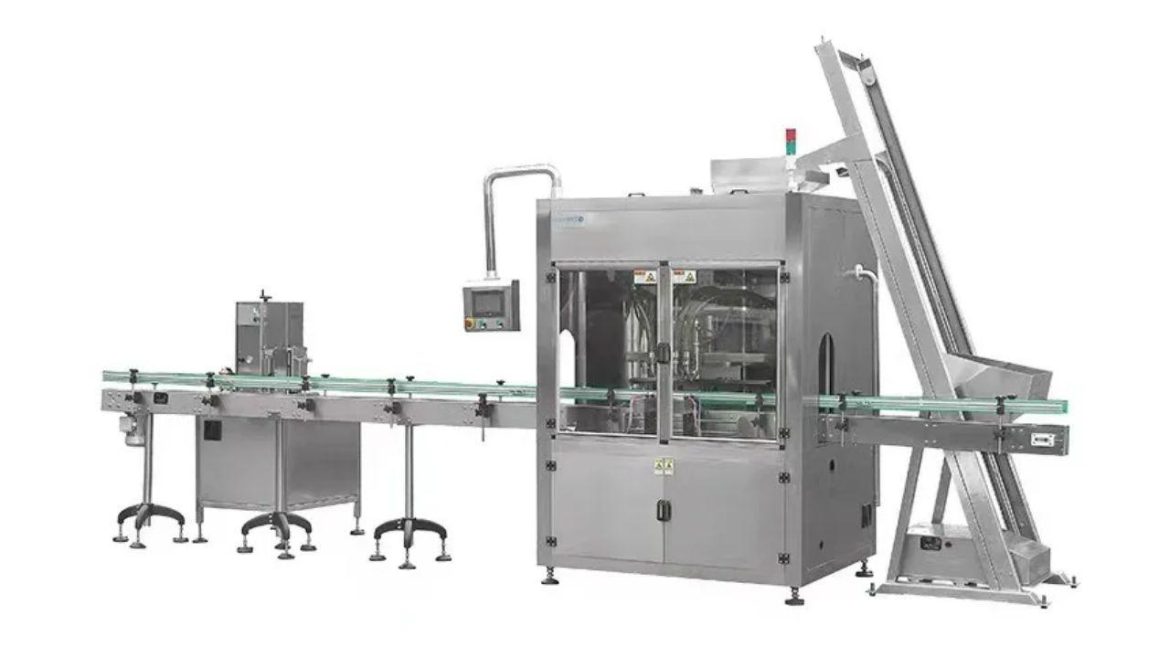Hello, fellow manufacturing enthusiasts, and welcome to another exciting exploration in the world of industrial packaging machinery. Today, we’re turning up the heat a notch as we dissect the operations of the Hot Filling Machine. We’ve all seen those rows upon rows of neatly filled beverage bottles at our local stores, but have you ever wondered how they’re filled so perfectly? Our quest for answers leads us to the amazing hot filling machines. Whether you’re an industry insider or a curious onlooker, knowing how these machines work is truly fascinating.
From trusted manufacturers like Packerasia, these machines are ubiquitous in the beverage industry, playing a crucial role in the packaging and preservation of a wide range of products. Let’s dive into the details.
What is a Hot Filling Machine?
First and foremost, let’s set the stage by defining what a hot filling machine is. As the name suggests, a hot filling machine is used to fill containers (like beverage bottles) with liquids at high temperatures. Why hot, you ask? Well, the heat does two things: it aids in filling viscous liquids more easily and acts as a natural sterilizer, extending the product’s shelf life.
The Steps of Hot Filling Process
Just like a well-rehearsed ballet, the hot filling process is a choreographed sequence of steps, each crucial for achieving the perfect fill. Let’s go through each of these steps to appreciate the complexity and precision of a hot filling machine.
-
Product Preparation: In this step, the product to be filled is prepared and heated. The specific preparation process depends on the product type but usually involves mixing, heating, and sterilizing the product to the appropriate filling temperature.
-
Bottle Cleaning: Simultaneously, the bottles to be filled are cleaned and sterilized to ensure they are free from any contaminants. This step is vital for maintaining product quality and safety.
-
Hot Filling: Next comes the actual filling process. The heated product is pumped into sterilized bottles. The filling temperature is maintained high enough (usually between 194-203°F or 90-95°C) to ensure product sterility.
-
Bottle Sealing: Once filled, the bottles are quickly sealed while the product inside is still hot. This sealing process creates a vacuum as the product cools down, further enhancing the preservation of the product.
-
Cooling: In the final step, the sealed bottles are cooled down to room temperature in a cooling tunnel. This cooling process helps bring the product to a temperature suitable for further handling and transportation.
Hot Filling Machine in Action
Hot filling machines are commonly used in the food and beverage industry for packaging juices, teas, sports drinks, and other beverages that are sensitive to microbiological growth. But how do these machines actually work? Let’s break down the mechanics of a hot filling machine.
Hot filling machines feature a product tank, where the product is stored and maintained at the desired temperature. The product is then channeled through a filling valve into the bottles. The design and control of the filling valve are critical for maintaining the right filling speed and preventing any product spillage or overflow.
Meanwhile, the bottles are moved along a conveyor belt, going through the cleaning and sterilization stage before reaching the filling valves. After the hot fill, the bottles are sealed and then cooled.
Throughout this process, precision, speed, and timing are of utmost importance. Each bottle needs to be correctly positioned under the filling valve, filled accurately, and moved along before the next one arrives. All these steps are synchronized to ensure a smooth and efficient operation, and it’s fascinating to
watch this all unfold!
Safety and Quality Control in Hot Filling
While hot filling is an efficient method of packaging, it’s not without its challenges. The high temperatures involved require careful control to prevent any risks associated with overheating. Additionally, maintaining the quality and taste of the product is equally important.
This is where high-quality hot filling machines, like those from Packerasia, come into play. They are designed with meticulous control systems to manage the temperature, pressure, and filling speed, ensuring a safe and efficient operation while preserving the quality and integrity of the product.
Conclusion
Hot filling machines are truly wonders of modern manufacturing technology, marrying precision, efficiency, and safety to deliver quality-packaged products. These machines underscore the significance of automation and technology in our daily lives. So, the next time you pick up a bottle of your favorite drink from the shelf, you’ll know a bit more about the heated journey it took to get there.
That wraps up our exploration of how a hot filling machine works. I hope this guide was as enlightening for you as it was for me. Stay tuned for more intriguing insights into the world of industrial machinery. Until next time, keep learning, and stay curious!
